The Northern Naturalist #6
Why do Tamaracks Drop Their Needles, Ten Ways to Be Sure You Get Enough Autumn Vibe This Year, Review of Birds in Minnesota by Robert Janssen, and News and Notes
Why do Tamaracks Drop Their Needles?
“I part the out-thrusting branches and come in beneath the blessed and the blessing trees.” —Wendell Berry, “Woods”
Just at the time of year when things go slate gray, when the leaves of most trees have dropped, the tamaracks (Larix laricina) begin to glow.
Tamarack (also called Black Larch, Eastern Larch, American Larch, and Hackmatack) is the primary native larch tree in the eastern half of northern North America. Its range extends across the continent from Alaska to Newfoundland, north to the tree-line, and south to mid-continent. There are ten species of larch in the world; three are native to North America, plus there are scattered, planted European Larch here too.
European Larch can grow much larger than Tamaracks. They have slightly longer needles and cones, and to my eye, they turn a deeper golden than Tamaracks. You won’t find them in the woods—like many non-native trees, they are confined to cities and yards where they were planted.
Mature Tamaracks usually grow 40 - 80 feet tall, but they can also hug the ground in harsh conditions, and in ideal conditions, they can grow up to 150 feet tall. They are considered a short-lived tree—usually 150 years or so.
The needles of Tamaracks are bright green in summer, about 1/2” in length and much softer than other conifers. I always like running my hand along a branch; they’re pliable, and it’s an unusual sensation. Unlike our other conifers, these needles grow in tufts of up to 35. The cones are inconspicuous and only 1/2” or so long. They have four or five rows of scales; like other larches, each scale has a bract (modified leaf), but on a Tamarack, the bracts are hidden within the cones.
Male and female cones (technically, “strobili”—the cones are the brown, woody seed-bearers) grow on the same tree. The male pollen cones are round and yellow. Female cones are round and red. Pollination happens in April and May, and then the male cones wither and fall off. The female cones mature by September; by this time, the cones are brown. Each has two seeds, which are shed in September, for the most part.
Tamaracks have two kinds of branches. New growth has scattered, single needles; old growth will produce clusters of needles. The twigs will be hairless and light brown. The bark on the trunk of young trees is gray and smooth; the bark of older trees will be rough and flaky.
Tamaracks are striking all through the growing season. Their new growth in the spring is especially light green and stands out against the darker conifers alongside. They remain a fresh-looking green until late autumn, when their needles turn yellow and then a deeper golden-orange. By the time this happens, the leaves of most of the other deciduous trees will have dropped, and the glow of the Tamaracks lights up the forest. Then they drop their needles.
But Tamaracks are conifers. Why do they turn yellow and drop their needles, unlike their relative conifers? It’s related to their northern, frigid range. Tamarack needles are efficient in harsh, northern conditions. They are dispersed along their stems in a more open pattern than other conifers, so each needle gets more sunlight and is fully engaged in photosynthesis. Evergreen needles are coated with a waxy surface that protects them from drying out in winter. They also contain phenols that deter winter plant-eaters.
Since Tamarack needles drop in the fall, they don’t have either of these problems, and the plants don’t need as much carbon and other resources to grow these adaptations (wax and phenols). Larches also reabsorb nitrogen from their needles before they drop, and they use it more efficiently than other conifers.
Tamaracks are well-suited to the North, and they are one of the trees that grows all the way up to the Arctic tree line. They can survive temperatures as low as -79° F. Only Black Spruce and White Spruce have more northerly ranges. These species (along with Paper Birch—another far-northern species) can push water from their cells into the spaces between cells, which prevents ice crystallization from damaging their tissue. Though they don’t need fire to propagate, Tamaracks are often a pioneer species after fire. They allow for lush undergrowth, because of their open crowns and sparse needle placement.
Tamarack wood is high in silica, so it is more rot resistant than many northern woods and has been used for utility poles and other exterior uses. My grandfather told me that he always used Tamarack for enclosures for horses and cattle, because they wouldn’t chew through it the way they did with other woods. The word, “Tamarack,” comes from a native (Abenaki) language and is related to “snowshoes,” and because Tamarack wood will hold together in strips, it has been used for both snowshoes and canoes. Tamarack are often used for bonsai because of the dramatic color and leaf drop.
At the time of European settlement, Tamarack was the most abundant tree species in Minnesota, but now it is mainly found in peatlands and other low areas. The decline is likely due to fire suppression, logging, and larch sawfly. Tamaracks do not tolerate shade, so they are only found in fairly open forests.
When October rolls around, be sure to get out to where the tamaracks gleam and soak in the warm, golden glow before the snows fall.
Ten Ways to Be Sure You Get Enough Autumn Vibe This Year
It’s my favorite season, AND it’s a busy season. In the midst of everything else, make sure you get the full, natural experience. Here are ten ways to do that:
Search out excellent stands of colored leaves. You can start looking now, even if it’s just the beginning of colored leaf season. Look for solid stands of Sugar Maple (orange), groups of Red Maple (red), and aspen and birch groves (yellow). Keep visiting periodically until you can walk into a stand of trees and feel the glow of the leaves around you.
Go out in the rain and look for grounded migrants. Birds don’t like to migrate in rainstorms, so if they get caught in one, they will stop their flight and spend time near the ground hunting for food or perched in a tree, waiting it out. Millions of migrating birds have flown over your head already this year, and you missed them! They migrate high in the air in the middle of the night. Here’s your chance to actually see some.
Put out some fruit for butterflies or nectar for hummingbirds. Butterflies love juicy fruit. Almost any fruit will do, but grapes work well. Rotting fruit is probably even better, but not required. Ruby-throated Hummingbirds will be well on their way out of my state, heading south, very soon. Keep your feeder up though—a later hummingbird could be a rare species!
Find some mushrooms. Late summer and fall is the best season to find photogenic mushrooms in the forest. It has been dry around here during the late summer, so once we get some rain, I expect the mushrooms to pop!
Enjoy the last fall flowers. The asters and goldenrods are in full bloom now, and some of them will hang on until the snow falls. Their purples and golds are a treat when the landscape is brown.
Notice the bright orangey-red berries of Mountain Ash. They’re pleasing to look at all on their own, especially once the leaves begin to drop. Pay attention to who’s eating them. Mountain Ash trees are a great place to search for migrating birds.
As with the other colorful fall trees, you can begin looking for Tamarack stands now. In October, re-visit them to take in the gorgeous golden glow.
In the last half of October, find some Snow Buntings. Watching flocks spring up from the road, seemingly appearing out of nowhere and flashing white across your view is an essential fall experience. Other open-country birds come through in numbers too, like Horned Larks and longspurs.
Here, on the shore of Lake Superior, fall is when we get some big storms and big waves. Put on your rain gear and get energized by the spray. If you’re not near a big lake, what’s your equivalent? Heavy rain, feeling the wind come across a smaller lake or river, or maybe feeling the first snow of the season on your face.
It’s fall! Soak it up!
Birds in Minnesota (Revised and Expanded Edition) by Robert B. Janssen, University of Minnesota Press, 2019, 583 pages, $34.95
This edition is an update of the 1987 edition:
Which was a replacement for the 1975 publication:
Which was the first report on statewide avifauna since the 1932 classic:
The author, Bob Janssen, died last year, and this edition represents a capstone to his lifelong work helping develop knowledge of the birds of Minnesota.
I knew Bob and worked together with him at Grand Marais Birding Festivals, as well as providing him with a lot of data from the Northeastern Minnesota state parks for Birds of Minnesota State Parks. He was one of the most active birders in Minnesota well into his later years. He worked on many projects that ushered birding in Minnesota into its current popularity, serving on the Minnesota Ornithological Records Committee, editing The Loon, and holding offices in the Minnesota Ornithologist’s Union, for example. His Minnesota life list (414 species) is still #4 on the all-time roster. He identified at least 220 species in each of Minnesota’s 87 counties.
He once told me that when he got his first pair of fine binoculars, he took them out to try as soon as he could. At one of his stops, he spent a fair amount of time. Then he drove off to his next stop. When he got out of the car there, he realized he did not have his new binoculars, and he remembered that he had set the binoculars on the roof of the car at the last stop. He raced back, and not only did he see the binoculars there on the road, he watched as a semi drove over them. Oof!
Given that it had been over 30 years since the last such book, an update was overdue. It’s an attractive book, and unlike its predecessors, it has a lot of fine color photographs included. I enjoyed them, but they are incidental to the core content of the book, which is dates, maps, and text about the occurrence of all the species of Minnesota birds.
Reviews on Amazon and elsewhere complained that the book doesn’t include other information on identification or life history beyond migration dates. I guess these reviewers think every bird book has similar information. This book lives up to its description. If you’re new to Minnesota birds and birding, you will enjoy Kim Eckert’s 12-page overview of the state’s geography and bird life, included at the beginning of the book.
A larger problem for this book is that, by and large, the information included is available online for free. The “Occurrence Maps” section of the website of the Minnesota Ornithologists’ Union (moumn.org), in particular, holds similar information; plus there’s the Minnesota Breeding Bird Atlas Website (mnbirdatlas.org) and ebird.org which give some of this information. Dave Cahlander, who is largely (maybe entirely!) responsible for the MOU site is given co-author status on the title page “with Dave Cahlander”, so I assume he helped Bob update the data from the earlier edition.
There are occasional disagreements between the MOU site and the data here, but these are minor. So, if you’re digging for specific information about one species, for example, you might want to check both sources. For most readers, who are seeking more general information about what to look for at different times of year, or to help them discover how likely a sighting they have made is, either source would be just fine.
There are some errors, particularly in the placement of some species in particular families. As I noted in a prior issue (NN #2), the lists change in name and order, so this is ultimately inevitable, but this book had some odd placement errors already at publication. Another advantage of the web site info is that it is updated frequently. The book could have used more thorough “bird-proofreading.” For example, Thayer’s Gull was lumped with Iceland Gull, not Ivory Gull (p.xix).
Why get this book then? I like it mainly because I can use it in my hands and not on a screen. It’s a little heavy, but it’s a pleasurable book to peruse. If I’m in the field, I use the MOU site on my phone. If I’m at home in my office, I enjoy using this book.
News and Notes
Just after the last issue came out, I learned that Sandy Komito, one of the Big Year birders I wrote about in the last issue, died on Monday, September 2nd at age 93. May his memory be eternal!
If you are enjoying my writing here, you might like one of my books:
Woodpeckers of North America: a Naturalist’s Handbook, is still in print and in stock. You can buy it at https://thephotonaturalist.com/product/woodpeckers-of-north-america/ or on amazon. If you’d like a signed copy, contact me through substack and I’ll send you one, inscribed as you wish, for $20, which includes shipping in the U.S.
Owls of the North: a Naturalist’s Handbook, is out-of-print, but there are some used copies available online. We’re hoping to do an expanded second edition at some point.
Stories in Log and Stone: the Legacy of the New Deal in Minnesota State Parks, which won an Interpretive Media Award from the National Association of Interpretation, is still in print, but only available (aside from a few used copies online) at Minnesota State Park stores, and possibly at the Minnesota History Center in St. Paul. I don’t receive any further proceeds from this book, but I am delighted that it is still in print over twenty years after publication.
Thank you to Hawk Ridge Bird Observatory for linking to my newsletter in their e-news. So much happening there this time of year: www.hawkridge.org
We’ve had an unusual stretch of easterly winds, which means the raptor migration so far has been a trickle. Looks like Friday (September 20th, the day after this is published) might be a change for westerlies; if that happens, it could be a big flight day!

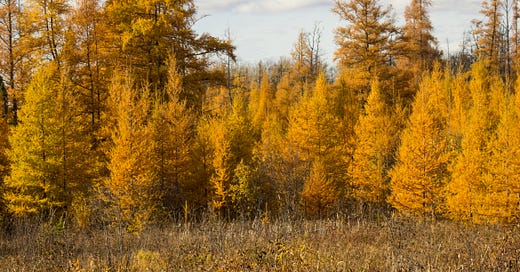




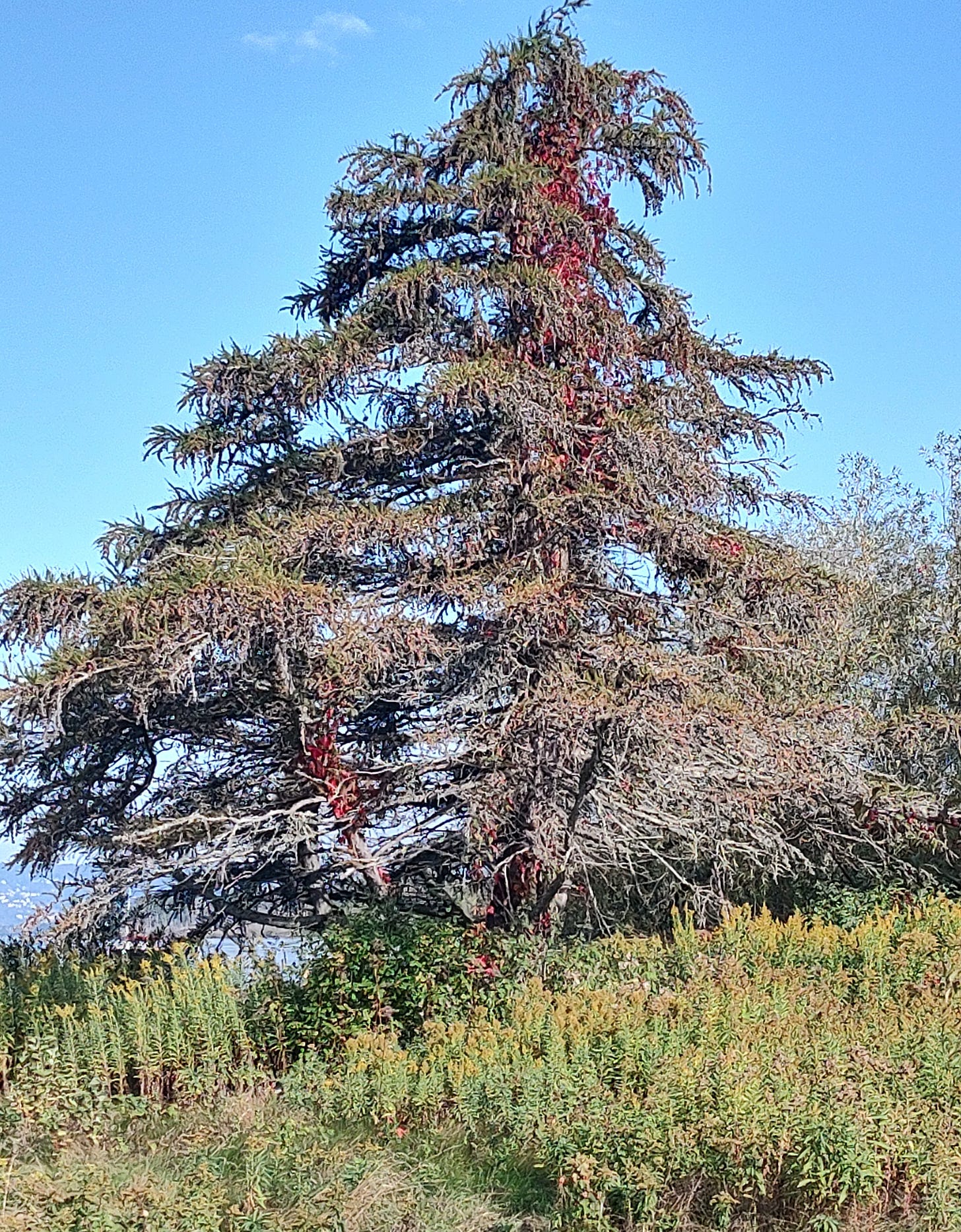
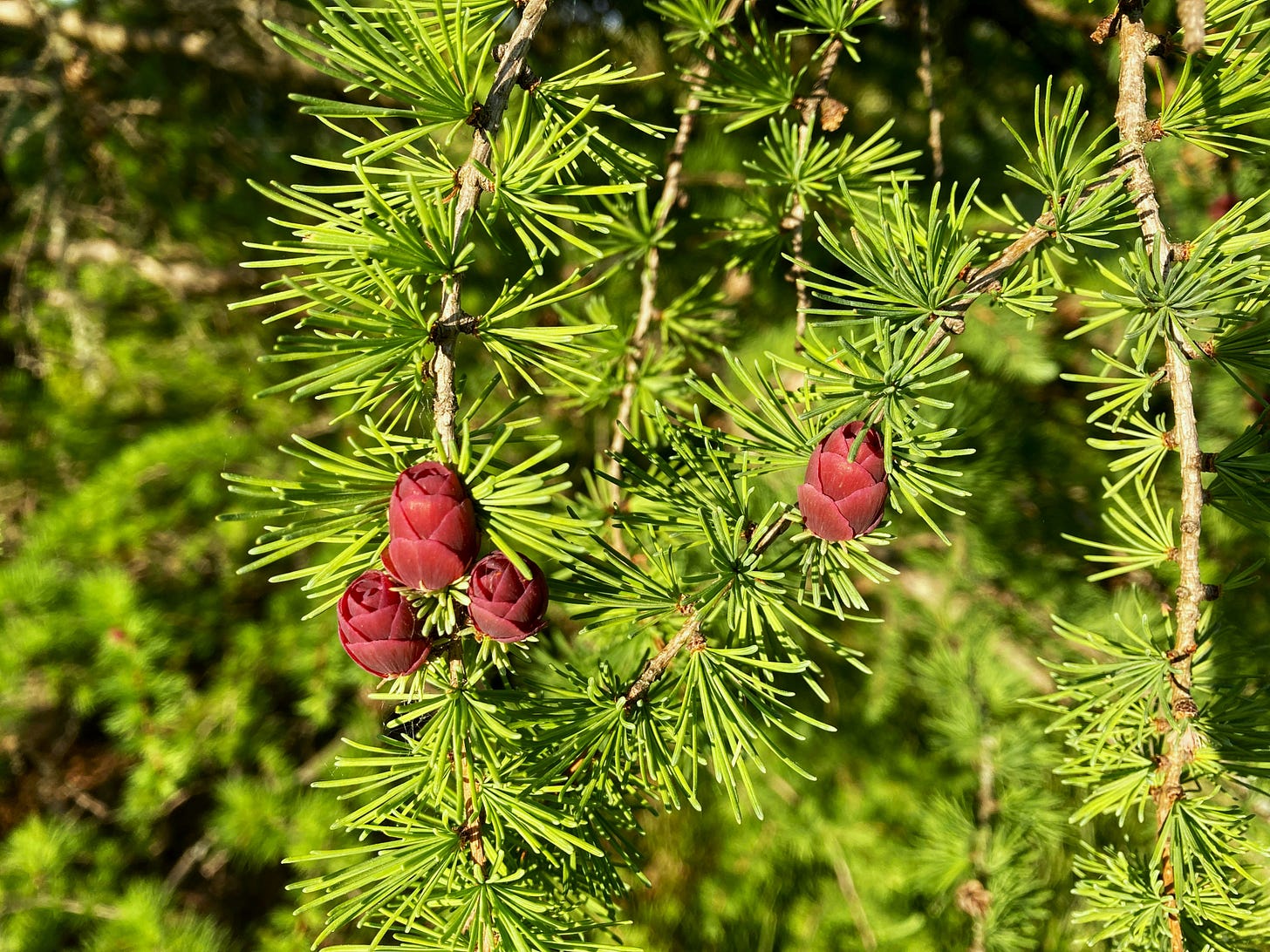
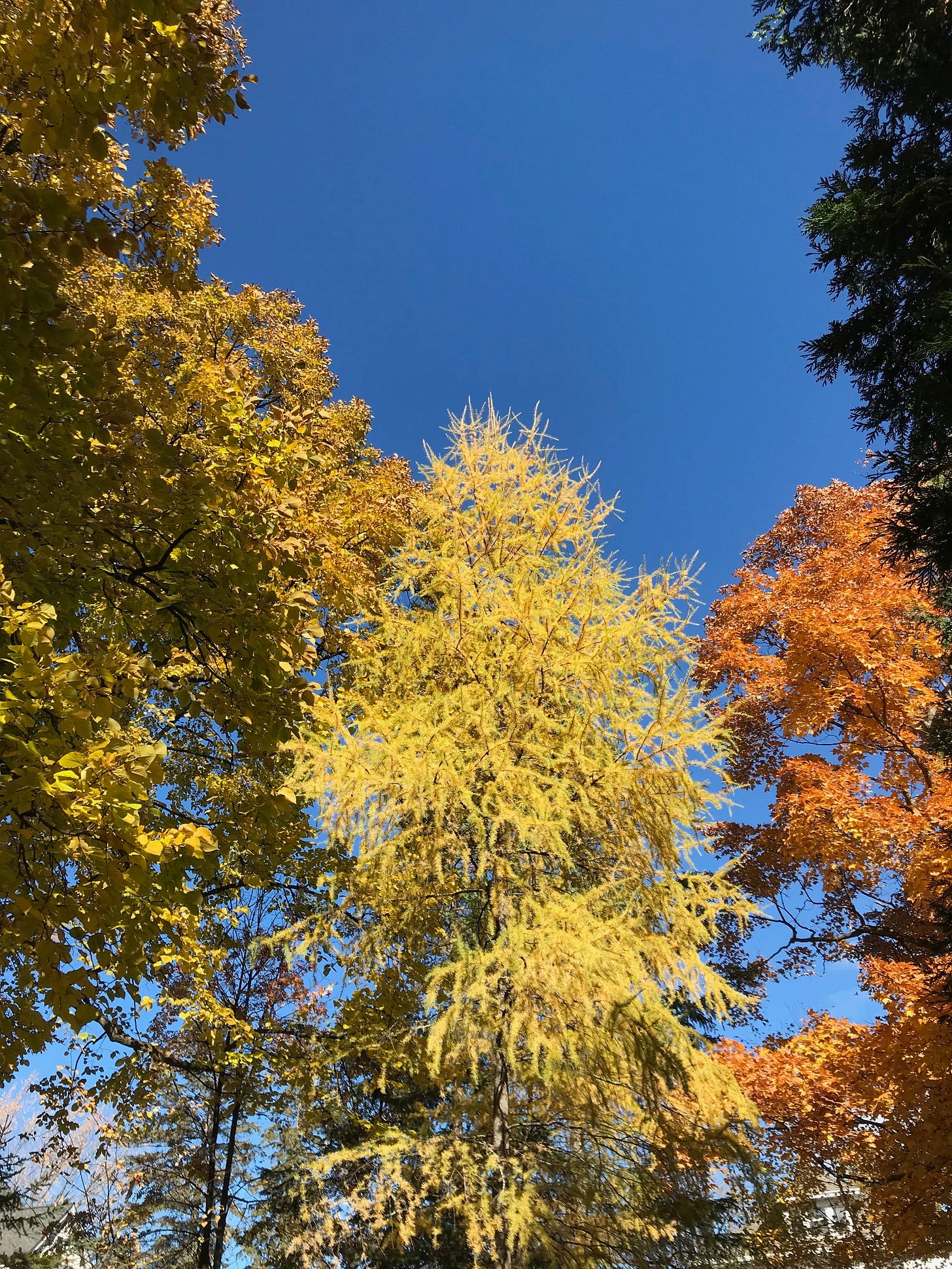
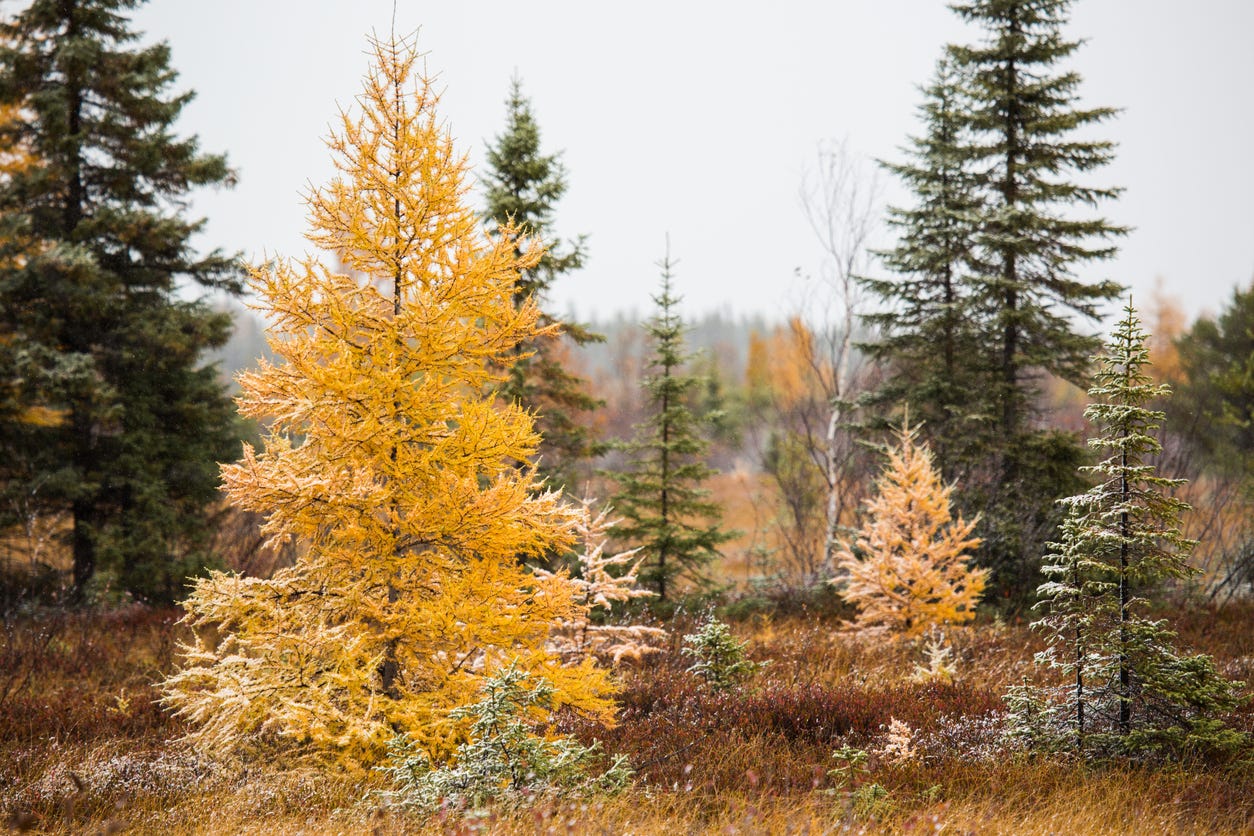
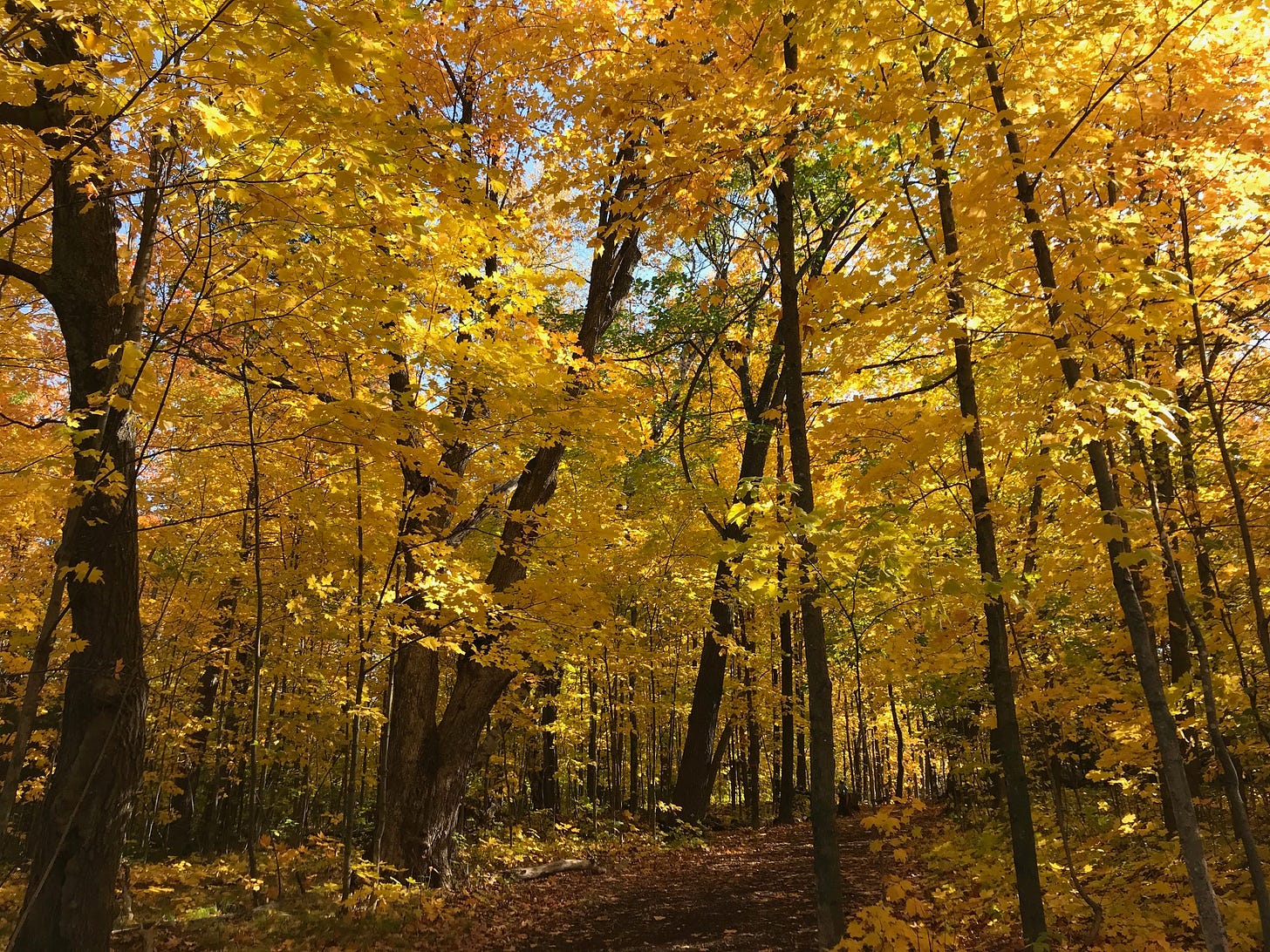
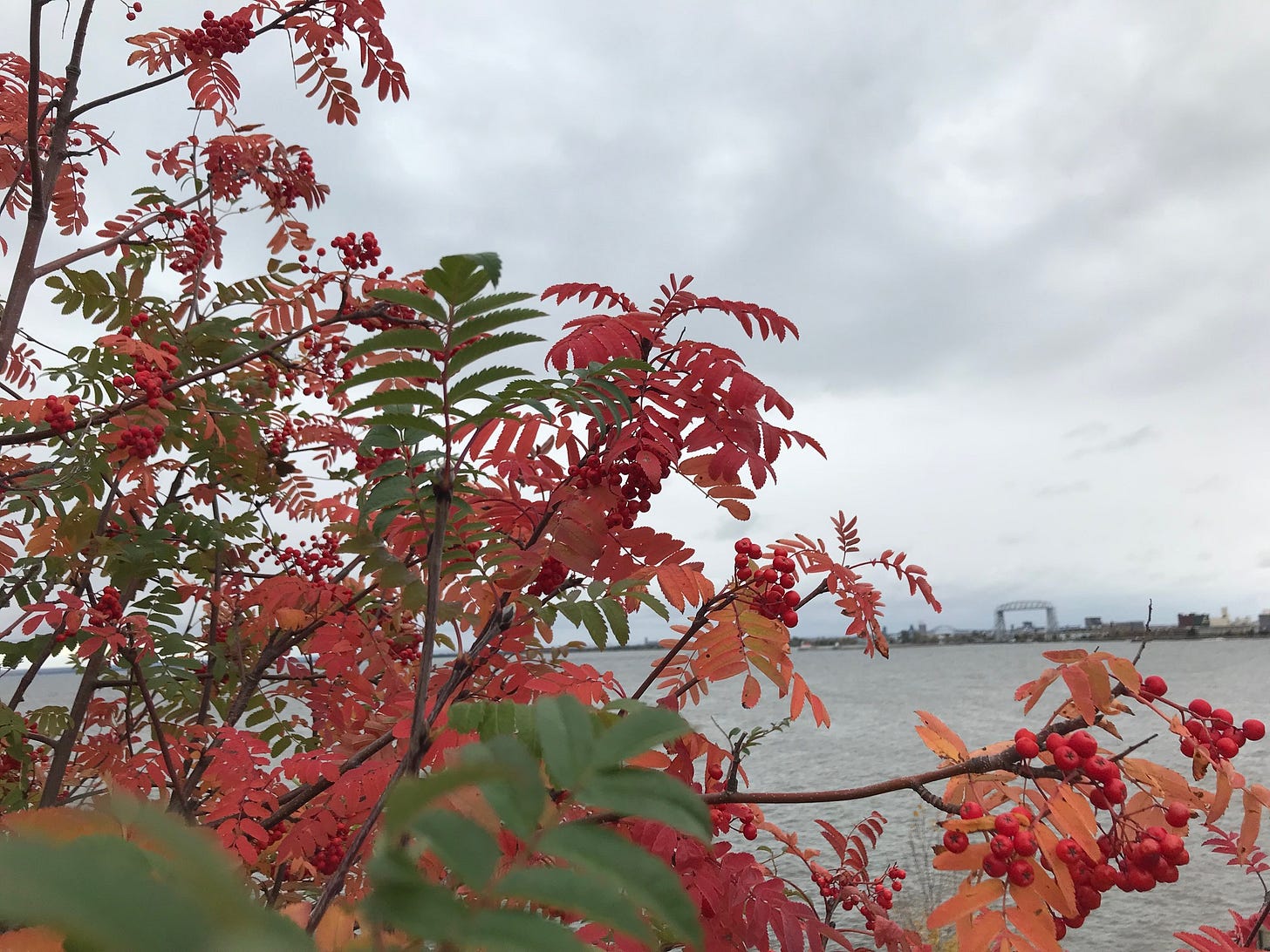
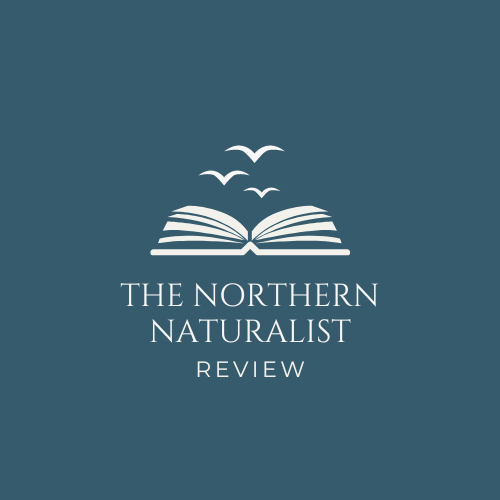



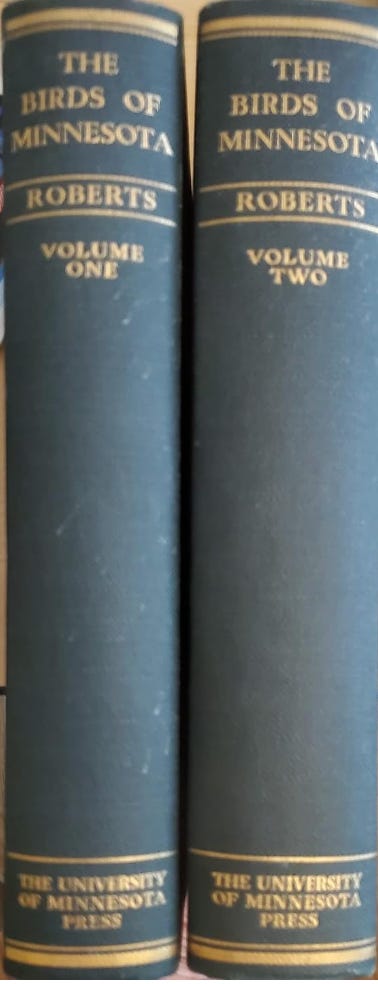




I enjoyed the article on Tamaracks. They grow in Idaho and I make special trips just to go and see them!